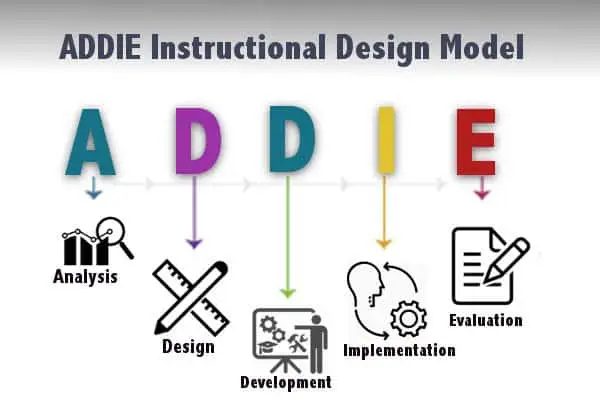Designing Human-Centered Presentations That Increase Audience Engagement

About the author: Anand is a presentation expert and founder of SlideBazaar, helping professionals create polished presentations through modern templates and design services.
When I first began leading presentation teams, I quickly discovered a harsh truth: brilliant content means nothing if your audience isn’t engaged. Over my years guiding teams through countless high-stakes presentations, I’ve learned that true engagement comes not from flashy slides or complex data, but from deeply understanding the humans sitting across from you.
Human-centered presentations transform the typical one-way broadcast into a meaningful exchange that resonates with audiences on both intellectual and emotional levels. By applying principles of human psychology and powerful storytelling techniques, we can create presentations that don’t just inform but connect, inspire, and drive action.
What Makes a Presentation Human-Centered?
Human-centered design (HCD) is a problem-solving approach that places user needs at the core of the design process. When applied to presentations, it transforms how we conceptualize, create, and deliver our message.
According to experts at UCSF, “Human-Centered Design is a problem-solving approach focusing on deeply empathizing with users throughout phases including discovery, ideation, prototyping, and testing; it enhances the relevance and usability of solutions and can be applied to presentations to increase engagement.” (Source)
Traditional presentations often follow a creator-centered approach: “What do I want to say?” Human-centered presentations flip this perspective: “What does my audience need to hear, and how do they need to hear it?”
The Stanford d.school’s HCD process emphasizes “phases of inspiration, ideation, and implementation; designing with empathy and rapid feedback loops yields more meaningful solutions. For presentations, this means actively involving the audience perspective when crafting messages.” (Source)
Applied to presentations, these phases translate to:
1. Inspiration/Discovery: Researching your audience, their context, needs, and challenges
2. Ideation: Developing content and delivery methods that address audience needs
3. Testing: Gathering feedback on presentation drafts
4. Implementation: Delivering the refined presentation and collecting feedback for future improvement
The Psychology Behind Audience Engagement
Understanding fundamental psychological principles allows us to design presentations that work with rather than against how the human mind processes information.
Empathy: The Foundation of Human-Centered Presentations
Empathy is the ability to understand and share the feelings of another. In presentation design, empathy means deeply understanding your audience’s:
– Knowledge level and familiarity with your topic
– Motivations and pain points
– Decision-making factors
– Cultural context and values
– Attention capacity and environmental constraints
Without empathy, presentations become self-centered monologues rather than meaningful dialogues.
Managing Cognitive Load
The human brain has finite processing capacity. Cognitive load theory explains that when we overwhelm this capacity, comprehension and retention suffer dramatically.
I’ve seen countless presentations fail because they bombard audiences with dense slides containing multiple complex ideas. Human-centered presentations carefully manage cognitive load by:
– Focusing on one key idea per slide
– Using visuals to support but not duplicate verbal content
– Breaking complex information into digestible chunks
– Providing processing time through strategic pauses
– Eliminating unnecessary details that distract from core messages
Attention Psychology
Human attention is a limited resource, and it’s increasingly scarce in our distraction-filled world. Effective presentations work with attention patterns by:
– Opening with a powerful hook that signals relevance
– Creating curiosity gaps that motivate continued focus
– Varying delivery pace, volume, and energy
– Using pattern interruptions to recapture wandering minds
– Incorporating movement, contrast, and unexpected elements
Emotional Connection
Information without emotion is rarely remembered or acted upon. The limbic system, our brain’s emotional center, plays a crucial role in decision-making and memory formation.
Human-centered presentations engage emotions through:
– Personal stories that create shared experience
– Authentic vulnerability that builds trust
– Humor that creates positive associations
– Visual and auditory elements that evoke specific feelings
– Language that acknowledges and validates audience emotions
Memory Retention
We’re constantly bombarded with information, but only a fraction becomes lasting memory. To improve retention, human-centered presentations leverage memory principles by:
– Creating memorable “anchors” through vivid imagery
– Using repetition of key messages in varied forms
– Organizing content around frameworks that aid recall
– Connecting new information to existing knowledge
– Employing the primacy and recency effects (audiences remember what comes first and last)
Storytelling: The Universal Human Language
Stories are our oldest and most powerful communication tool. They bypass analytical resistance and speak directly to our shared humanity.
“The human brain is wired for story,” I often tell my teams. “When we hear a story, our brains synchronize with the storyteller’s, creating a shared experience that mere facts can never achieve.”
Narrative Structure for Presentations
Even the most data-heavy presentations benefit from narrative structure:
1. Setup/Context: Establish the current situation and why it matters
2. Complication/Challenge: Introduce the problem or opportunity
3. Resolution/Solution: Present your ideas or recommendations
4. New Reality: Paint a picture of the improved future state
This structure mirrors how humans naturally process events and makes content more accessible and memorable.
Character-Driven Narratives
Effective presentations put humans, not abstract concepts, at the center. This might include:
– Customer stories that illustrate real impact
– Team members who overcame challenges
– Stakeholders who will benefit from proposed changes
– Even products or ideas framed as characters on a journey
Conflict and Resolution
Tension is essential to maintaining interest. In presentations, constructive tension might include:
– Contrasting the current state with a possible future
– Presenting problems before solutions
– Acknowledging objections and addressing them
– Creating and resolving knowledge gaps
Multisensory Storytelling
Human-centered presentations engage multiple senses to create immersive experiences:
– Visual elements that support rather than distract
– Voice modulation and pacing that creates auditory interest
– Physical movement that directs attention
– Tactile elements when appropriate (physical prototypes, interactive components)
– Even smell and taste in specialized settings
Human-Centered Design Methods for Presentations
Specific HCD frameworks can transform your presentation development process. Research shows that “using diverse design methods such as personas, journey maps, and rapid prototyping enables iterative improvements tailored to user needs, leading to increased ownership and engagement.” (Source)
Audience Personas
Just as product designers create user personas, presentation designers should develop audience personas that answer:
– What is this person’s role and level of expertise?
– What are their primary motivations and concerns?
– What objections or resistance might they have?
– What context will they be hearing this presentation in?
– How will they need to use this information?
For complex audiences, create multiple personas representing different segments.
Audience Journey Maps
Map the emotional and intellectual journey you want your audience to take:
– What do they know/feel at the beginning?
– What questions or objections will arise during the presentation?
– What realizations or insights should they experience?
– What will they know/feel/be prepared to do by the end?
This approach ensures your presentation addresses the audience’s needs at each stage of their experience.
Prototyping and Testing
HCD processes emphasize testing early and often. For presentations, this means:
– Creating low-fidelity drafts to test key messages
– Soliciting feedback from representative audience members
– Practicing with focus groups who can provide honest input
– Iterating based on feedback before final delivery
As experts note, “HCD processes use tools like analyzing and synthesizing research about users, creating personas and journey maps, and validating findings with stakeholders, all essential for designing presentations that meet audience expectations and problems effectively.” (Source)
Co-Creation Approaches
Some of the most effective presentations incorporate audience input during development:
– Interviews with key stakeholders to understand needs
– Workshops to gather diverse perspectives
– Pre-presentation surveys to identify knowledge gaps
– Real-time feedback mechanisms during delivery
Practical Tips for Humanizing Your Presentations
Research Your Audience Deeply
Go beyond basic demographics to understand:
– Recent challenges and successes
– Industry terminology and frameworks they use
– Cultural factors that influence their perspective
– Environmental factors (will they be tired after a long day? Distracted by competing priorities?)
Design for Emotional Impact
Identify the core emotions you need to evoke:
– For decision-makers: confidence, clarity, urgency
– For implementers: capability, ownership, enthusiasm
– For skeptics: thoughtfulness, credibility, openness
Then craft content that deliberately triggers these emotional states.
Use Visual Design Principles
Human-centered visual design follows key principles:
– Simplicity: Remove everything that doesn’t directly support your message
– Hierarchy: Make the most important elements visually prominent
– Consistency: Use repeating elements to create cohesion
– Contrast: Direct attention through deliberate visual difference
– White space: Give content room to breathe and be processed
Practice Deliberate Delivery
Your physical presence and voice are powerful tools:
– Use movement purposefully to direct attention
– Vary your vocal pace, pitch, and volume
– Make authentic eye contact (with real individuals in in-person settings)
– Incorporate strategic pauses to allow processing time
– Match your energy level to the emotional tone needed
Create Interactive Moments
Even in formal presentations, find ways to involve your audience:
– Ask rhetorical questions that prompt reflection
– Incorporate simple polling or feedback mechanisms
– Create brief discussion moments
– Use analogies that invite personal connection
– Provide opportunities for questions at strategic points
Building a Human-Centered Presentation Culture
For team leads and managers, creating a culture that prioritizes human-centered presentations requires systematic change:
Train Teams in Audience-First Thinking
Move beyond traditional presentation training to include:
– Empathy-building exercises that shift perspective
– User research techniques for understanding audience needs
– Storytelling workshops that develop narrative skills
– Feedback methods that identify audience impact rather than just content coverage
Implement Human-Centered Processes
Formalize HCD approaches for presentation development:
– Build audience research into presentation timelines
– Create presentation review criteria that prioritize audience impact
– Develop team roles specifically focused on audience experience
– Establish testing protocols for high-stakes presentations
Measure What Matters
Shift metrics from presenter-centered to audience-centered:
– Audience comprehension and retention
– Behavior change following presentations
– Emotional impact and engagement
– Decision quality based on presented information
– Audience feedback on relevance and usefulness
Model the Change
Leaders must embody human-centered presentation approaches:
– Openly discuss your own presentation challenges
– Share examples of presentation transformations
– Celebrate presentations that effectively connect with audiences
– Allocate resources for audience research and testing
– Demonstrate vulnerability and authenticity in your own presentations
The Future of Human-Centered Presentations
As our understanding of human psychology deepens and technology evolves, human-centered presentations will continue to transform. Future developments may include:
– Personalized presentations that adapt in real-time to audience response
– Deeper integration of neuroscience findings into presentation design
– More sophisticated tools for measuring emotional and cognitive impact
– Greater emphasis on co-created and participatory presentation models
– Enhanced training in empathy and emotional intelligence for presenters
Conclusion: The Human Difference
In a world of increasing automation and digital interaction, the ability to deeply connect with other humans through presentations becomes more valuable, not less. By designing presentations with human needs, limitations, and psychology at the center, we create experiences that don’t just transfer information but transform understanding.
The most sophisticated slide deck or elaborate production values cannot compensate for a fundamental lack of human connection. Conversely, even simple presentations delivered with genuine empathy and audience understanding can create lasting impact.
I encourage all presentation teams to adopt this mindset: We are not in the business of creating slides or delivering information. We are in the business of creating human connections that enable shared understanding and collective action. When we approach presentations from this human-centered perspective, engagement isn’t just a goal but the inevitable result.


